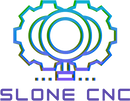Laser Engraving
What is Laser Engraving and how does it work?
Laser engraving is a process that vaporizes materials into fumes to engrave permanent, deep marks. The laser beam acts as a chisel, incising marks by removing layers from the surface of the material. The laser hits localized areas with massive levels of energy to generate the high heat required for vaporization.
Laser engraving technology is typically used to engrave metal workpieces that will be exposed to various types of wear or surface treatments. Metal engraving works with steel and aluminum (including anodized and die-casting aluminum).
The most outstanding feature of this process is its ability to engrave 2D codes that keep high readability rates after post-process treatments. Those treatments can include shotblasting, e-coating and heat treatments, addressing the most complex traceability issues.
But if engraving the most resistant identifiers isn’t needed, laser etching is generally preferred because it’s a high-speed method that doesn’t rely as heavily on ablation.
You can laser etch a wider variety of materials, including Wood, Glass, Acrylic, Leather, Cloth, steel, aluminum, anodized aluminum, lead, magnesium, and zinc.
From Solid to Gas: How It Works
Whereas laser etching melts the material surface to change its roughness, laser engraving sublimates the material surface to create deep crevices. This means that the surface instantly absorbs enough energy to change from solid to gas without ever becoming a liquid.
To achieve sublimation, the laser engraving system must generate enough energy to allow the material’s surface to reach its vaporization temperature within milliseconds. Considering the extreme temperatures required for sublimation, laser engravers are pretty powerful tools.
Types of Laser Engravers
CO₂ lasers (gas lasers)
CO2 lasers are gas composed systems containing a mixture of carbon dioxide that is stimulated electrically. They are best suited for processing non-metallic materials as well as most plastics, and offer a wavelength of 10.6 micrometers. CO2 systems are the most widely used laser type because of their relatively high efficiency and superior beam quality.
CO2 lasers are ideally suited to process the following materials: Wood, acrylic, glass, paper, textiles, plastics, foils & films, leather, stone
Fiber lasers
Fiber laser sources are solid state machines that generate its beam by means of the "seed" laser and amplify it in specially designed glass fibers, which are supplied with energy through pump diodes. Offering a wavelength of 1.064 micrometers, fiber systems produce an extremely small focal diameter that results in intensity up to 100 times higher than a CO2 system, but by emitting similar power.
Fiber laser are ideally suited for metal marking applications such as engraving, annealing, and high-contrast plastic markings. Fiber systems feature a long service life with a minimum of 25,000 laser hours, and in general are maintenance-free machines.
Within the fiber laser family there is a MOPA laser which operates by pulse durations that are adjustable. This operation makes the MOPA system one of the most flexible lasers on the market and it can be used for a variety applications.
Fiber lasers are ideally suited to process the following materials: Metals, coated metals, plastics
Crystal lasers
Similar to fiber lasers, crystal lasers are solid-state systems ideal for marking applications, and are typically pumped by diodes. Amongst these system, the most common type within this category are Nd:YAG (neodymium-doped yttrium aluminum garnet) and Nd:YVO (neodymium-doped yttrium ortho-vanadate). YAG systems are named after the doping element neodymium and the carrier crystal, and offer 1.064 micrometers. Crystal laser systems also have similar wavelengths as fiber machines, and therefore are also suited for marking plastics and metals.
Crystal laser systems use relatively expensive pump diodes that wear on parts, and also require replacement after approximately 8,000-15,000 laser hours. Additionally, these systems have a shorter service life compared to fiber systems.
Crystal lasers are ideally suited for processing the following materials: Metals, coated metals, plastics, and also ceramic.
Depending on the material you are working with and the final outcome you are looking for will depend on the type of machine you will need.
Lasers are also used to cut out materials such as metal with a plasma cutter. Laser engravers and cutters are another form of a CNC machine in terms or a program uses code to tell the laser where to move, how fast to move and how much power to use.

